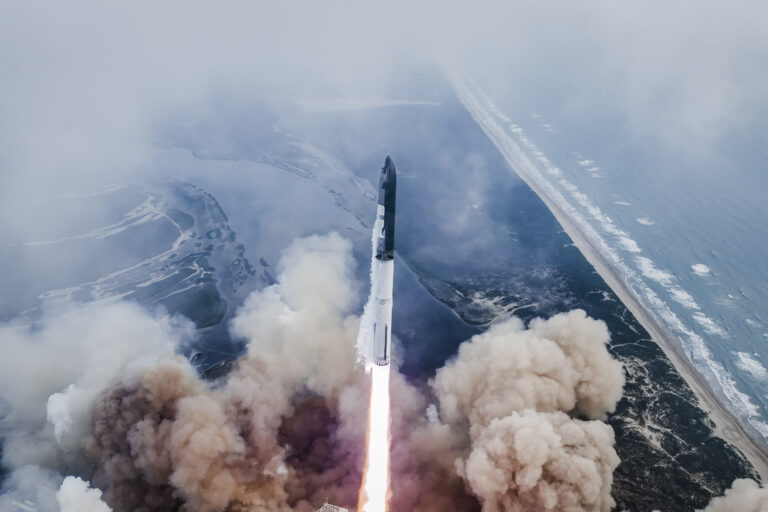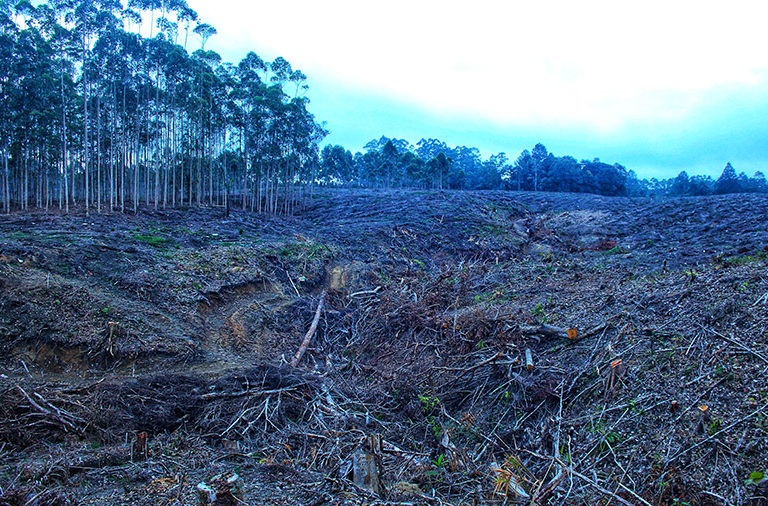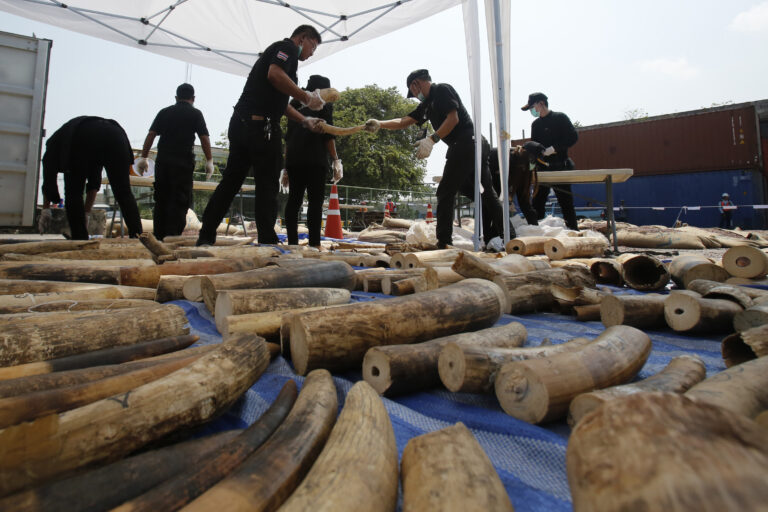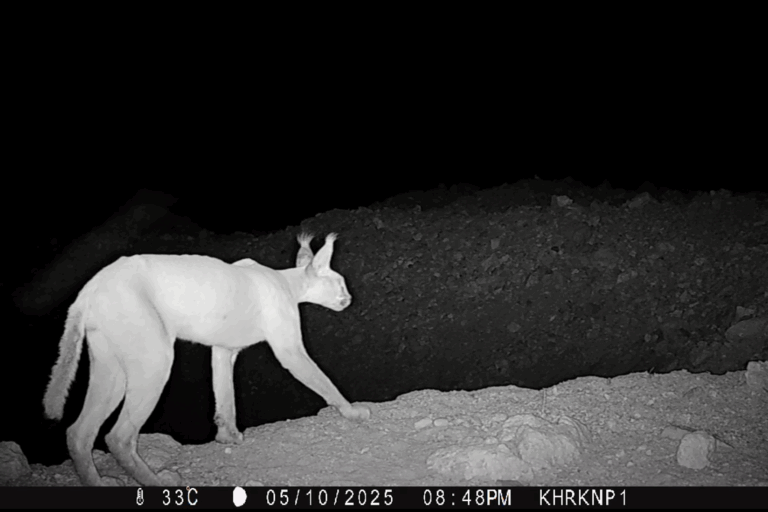- Space may be the final frontier, but the modern race to launch rockets and satellites at an unsurpassed rate has generated a large and rapidly growing environmental footprint, the full effects of which are poorly understood.
- Multiple companies and countries are rapidly increasing their launch capacity, with plans in the works to deploy tens of thousands of satellites within a few years. Experts warn this exponential increase brings with it major environmental concerns, from the ground to the upper atmosphere and into Earth orbit.
- Pollutants resulting from many thousands of rocket launches and from satellites burning up in the atmosphere could adversely impact the ozone layer and are already adding to climate change, but research is greatly lacking.
- Some experts warn of the Kessler Syndrome, a cascade of colliding and fragmenting space debris that may one day render key Earth orbits unusable. Analysts say proactive national and international regulations are needed to address multifaceted environmental impacts of a rapidly evolving space industry.
The skies overhead are already teeming with satellites. But their orbiting numbers will skyrocket in the near future as the commercial and international space race takes off. Three projects alone — SpaceX’s Starlink, China’s Guowang megaconstellation, and Donald Trump’s proposed Golden Dome missile defense system — will launch tens of thousands of new satellites.
Today’s 12,000 satellites could, according to some estimates, grow to 60,000, or even 100,000 total satellites by 2030, as a space industry already worth hundreds of billions of dollars sees rapid growth.
This 21st-century space race, while a boon for communications and Earth monitoring, is sending up a red flag with experts, who warn that the tech advances satellite may bring are linked to a growing number of Earth environmental impacts stretching from the industry’s supply chain here on Earth, into the upper atmosphere and out into space itself.
With countries initiating or expanding their space programs (including the U.S., EU, India, Japan, China, Russia, South Korea and the United Arab Emirates), and commercial efforts all in full swing, “we’re moving towards an industry that could cause a lot of damage to the environment if we don’t regulate it or understand it,” now, says Eloise Marais, an atmospheric chemist at University College London, U.K.
The industry’s toll stretches from its ground-based, energy-guzzling data centers, to metal-shedding rocket launches, to tons of orbiting space junk and debris regularly plummeting back to Earth. Among the risks are poorly understood space age atmospheric pollutants that could harm the ozone layer or worsen global warming.
These foreseen — and likely some still unforeseen — consequences are bringing calls for greater scrutiny of the space sector’s footprint, along with international regulation.
“The industry is developing a lot quicker than regulation can keep pace,” says Andrew Wilson, a lecturer in environmental management at Glasgow Caledonian University, U.K. “For that reason, what we’ve seen, historically speaking, is the space sector pretty much … do what it wants without much regard to the environment.”
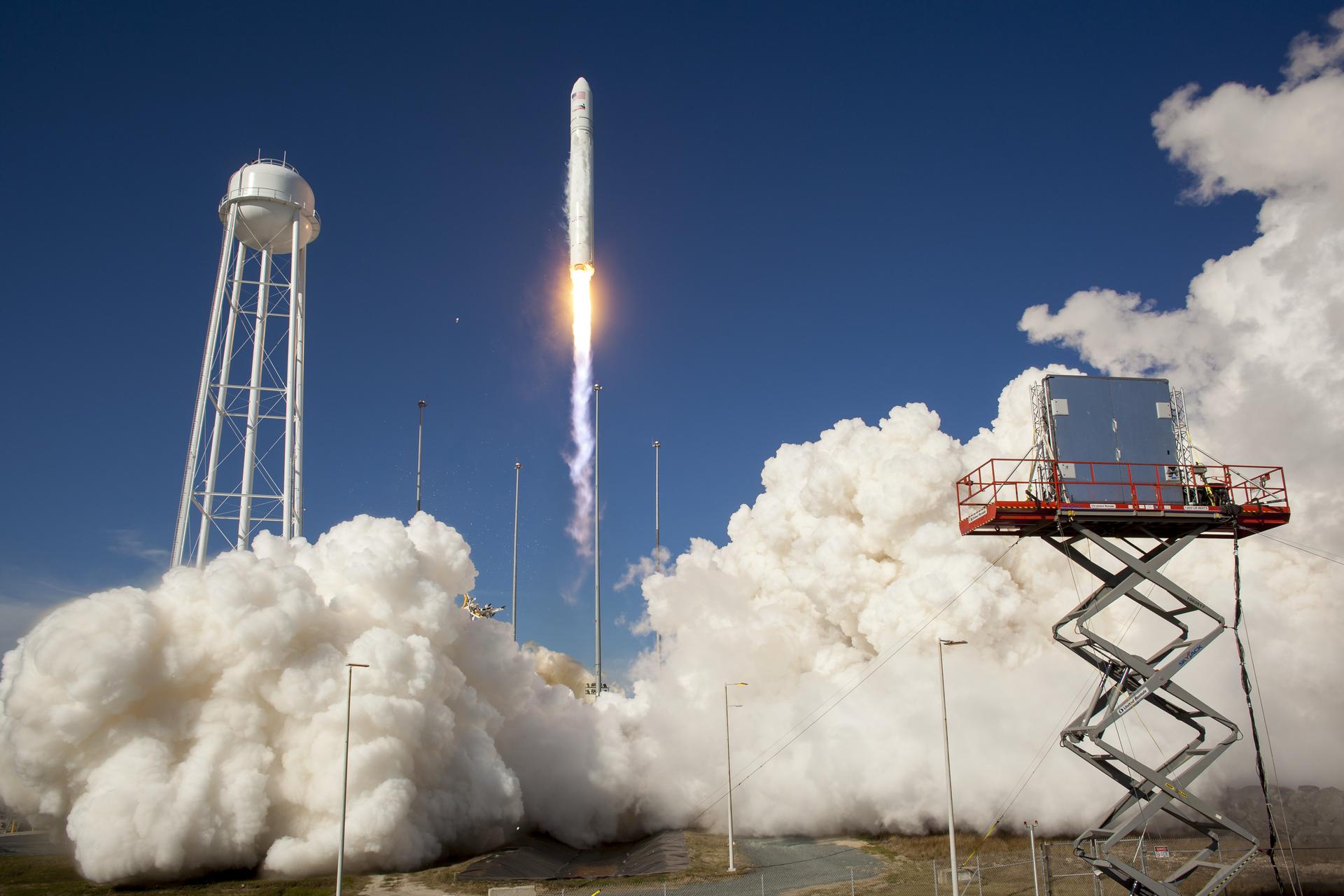
From ground to sky
In 2019, when Samantha Lawler, associate professor of astronomy at the University of Regina, moved to a farm in Saskatchewan, Canada, she saw dark, starry skies for the first time in her life. “I could see the Milky Way from my back door,” she recalls.
But about then, the number of satellites began steadily increasing, mostly due to SpaceX’s Starlink megaconstellation. “How bad is this gonna make my sky look?” she wondered. She’s just one of many astronomers concerned about the impact of satellites impinging on the study and understanding of the cosmos.
When SpaceX satellite debris slammed to Earth near her home, she began looking deeper at the impact of the rapidly growing number of satellites. “I wrote a research paper about that,” she says. “And slowly realized how many more problems there are with having this many satellites in orbit beyond the light pollution.”
Those existing and potential harms include a space sector supply chain reliant on extracting numerous metals, critical minerals and other components used in rocket and satellite construction, along with prodigious industry water use. Energy-hungry data storage is also a space industry must-have, and is responsible for mostly overlooked but significant carbon emissions, according to Kevin Gaston, professor of biodiversity and conservation at the University of Exeter, U.K.
“Many of the conversations you have with people on the industry side, it’s all about the launches and … the immediate impacts of launch infrastructure and launches themselves,” says Gaston. “Almost no one’s been talking about the ground infrastructure data storage.”
A 2024 study estimates that data storage to support current Earth observation satellites produces annual carbon emissions equivalent to 41,000 London-to-Paris flights. That figure is set to grow.
Researchers also underline that spaceports and launches — putting payloads, various missions, and even tourists into space — remains a growth industry that has historically underrecognized terrestrial biodiversity concerns — perhaps beginning with Cape Kennedy’s role in the extinction of the dusky seaside sparrow (Ammospiza maritima nigrescens). In a 2024 paper, an international research team found that 60% of launch sites overlap with protected areas, especially in the tropics.
Fanhao Kong, an author on that study and a researcher at the University of Marburg, Germany, says concerns are numerous, ranging from pollution emitted during launches, contamination of water sources, and noise disruption.
“Biodiversity conservation is always the last consideration during the whole process,” she says. Her study highlighted how siting of spaceports predominantly on tropical coasts, along with the intrusive propulsion boost of launch vehicles, puts mangroves at particular risk.
Conservationists in Mexico recently raised alarm that debris from a failed SpaceX launch led to contamination of a beach used by endangered sea turtles. Campaigners in the U.S. have protested against spaceports in other locations due to concerns over local water pollution and potential harm to protected areas. Wilson notes there is very limited knowledge as to how spent payloads falling into the world’s oceans impact marine life.
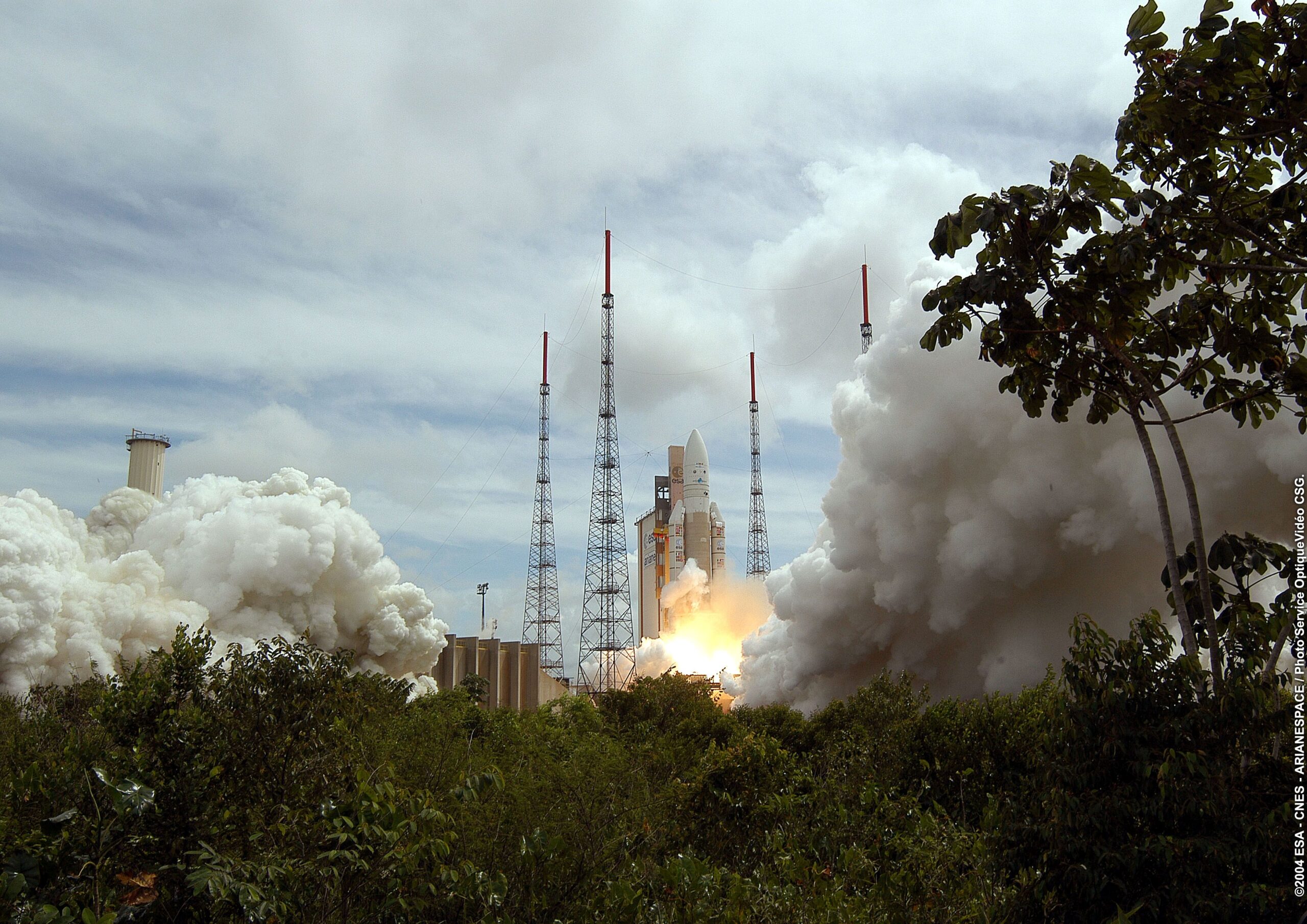

Liftoff and burn up
In 2024, there was one rocket launch attempt every 36 hours. That comes to around 260 launches yearly, a statistic that will move ever higher in tandem with the space sector’s contribution to pollution and global climate change, say experts.
Depending on fuel type, rockets emit varied contaminants, including black carbon, reactive chlorine and reactive nitrogen oxides, which can help deplete the protective stratospheric ozone layer. Rockets also release water vapor in the upper atmosphere, which contributes to global warming.
“We know exactly how much of these particles are emitted. We know exactly what altitude they’re emitted at,” says Wilson. “The issue is we don’t really know what the overall impact would be on radiative forcing, and ozone destruction over a prolonged period of time.”
In a typical launch, most rocket exhaust is spread within the stratosphere (11-50 km; 7-31 miles) and mesosphere (50-80 km; 31-50 miles), the second and third of the five layers of Earth’s atmosphere.
“In the past, we’ve had too few rocket launches to see any appreciable impacts on ozone. There might be some localized ozone losses due to the rocket launches, but that rapidly heals,” says Laura Revell, an atmospheric scientist at the University of Canterbury, Aotearoa New Zealand. But with more and more countries and companies heading to space or launching satellites, that is likely to change fast.
Revell co-authored a recently published paper that assessed potential future impact on the ozone layer. Under a “conservative scenario” of around 900 launches per year by 2030 — where the current trajectory is headed — they found no significant ozone loss.
But, she says, that study modeled its research on rockets launched in 2019, so that doesn’t include newer vehicles like SpaceX’s mammoth Starship, the largest rocket currently under development. These giant launch vehicles and new fuel types could change that analysis.
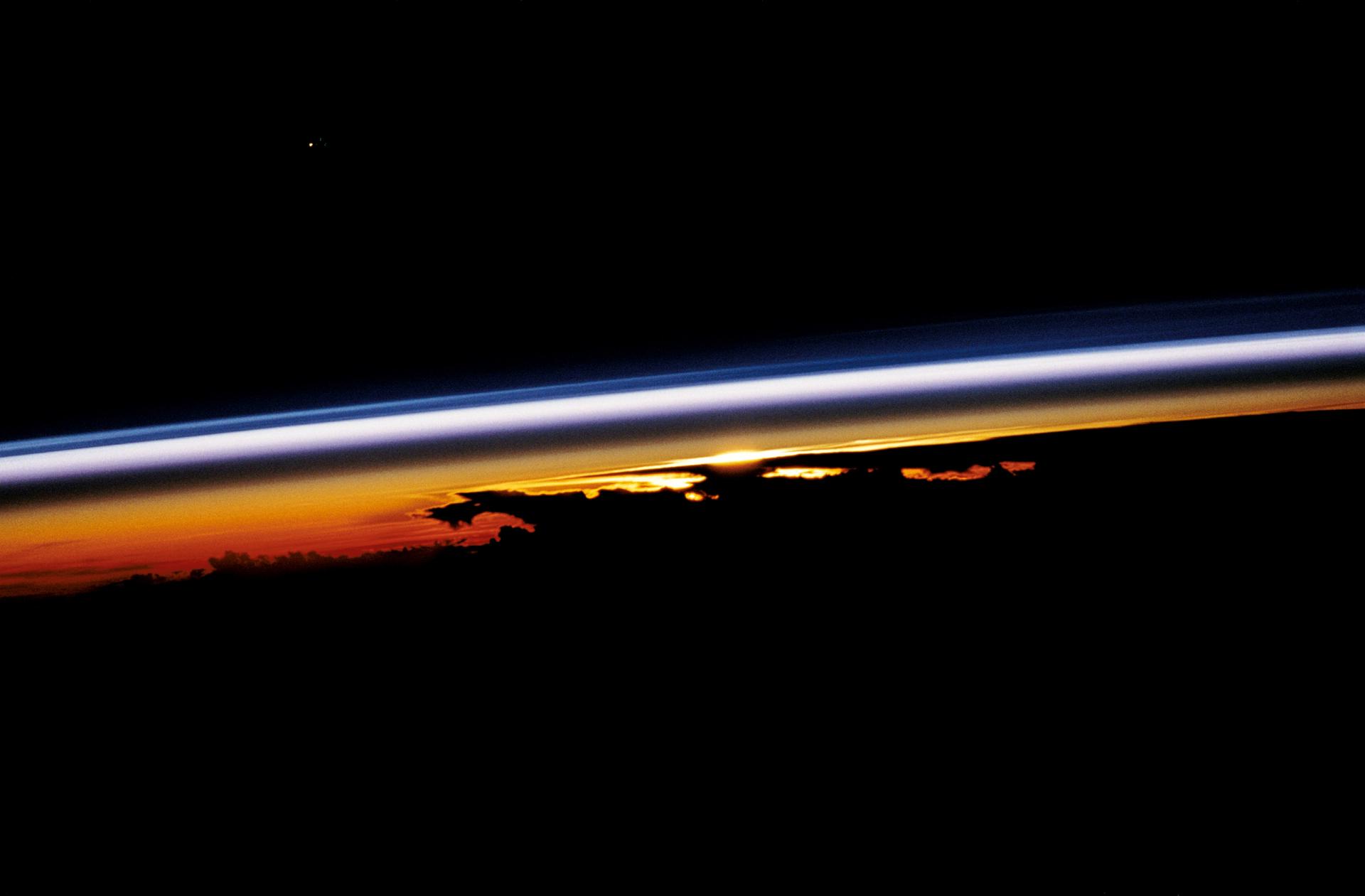
A second modeled scenario estimated a far higher number of launches, totaling 2,040 annually also by 2030 — around a tenfold increase — resulting in a decrease in stratospheric protective ozone of around 0.29% globally, and 3.9% over Antarctica. That’s a rapid increase, but not beyond the realms of possibility, Revell says.
Experts are also increasingly concerned about the environmental impacts as a growing number of orbiting satellites burn up on reentry at the end of their lives. “10 years ago, the amount of satellites burning up was about a couple of tonnes per year,” says Minkwan Kim, an associate professor at the University of Southampton, U.K. “Now we have a couple of tonnes per day.”
The number of objects burning up on reentry will soon push past the natural levels of metals created my meteorites, according to his estimates.
Kim lays out several concerns regarding this increase: First, satellites when burning up release metal particles into the atmosphere, such as metal oxides, which could trigger chemical reactions that eat away at the ozone layer, causing harm to the protective layer vital to conditions needed for life on Earth.
Second, these metal oxides could act as an inadvertent geoengineering experiment. They’re a common ingredient in sunscreen for good reason, as they act as solar reflectors. “Imagine if we spray sunscreen at high altitude; it blocks the sunlight,” he says. “For the global warming response, it might be good, but we don’t know about the [other] consequences.”
Recent research published by the Cooperative Institute for Research in Environmental Sciences (CIRES) at the University of Colorado Boulder, U.S., estimates that satellite reentries could contribute enough alumina to the stratosphere to alter wind speeds and temperatures in the polar regions by 2040.
A third concern: Metal oxide pollutants could disrupt the functioning of satellites already in orbit. Particles deposited in the atmosphere could interfere with signals, meaning that more satellites may be needed to counteract this affect. “That means we have to launch more satellites, and then we have to burn more,” Kim says.
Analysts also worry the rapid rate of industry development will outpace the ability for researchers to keep up. “Even if we start the study now, by the time we have a credible assessment tool, there would be as many as 30,000 more satellites in orbit with similar increases in rate of [satellite] reentry vehicles by the time a comprehensive understanding of their effects could be written,” warns a 2024 NASA paper.
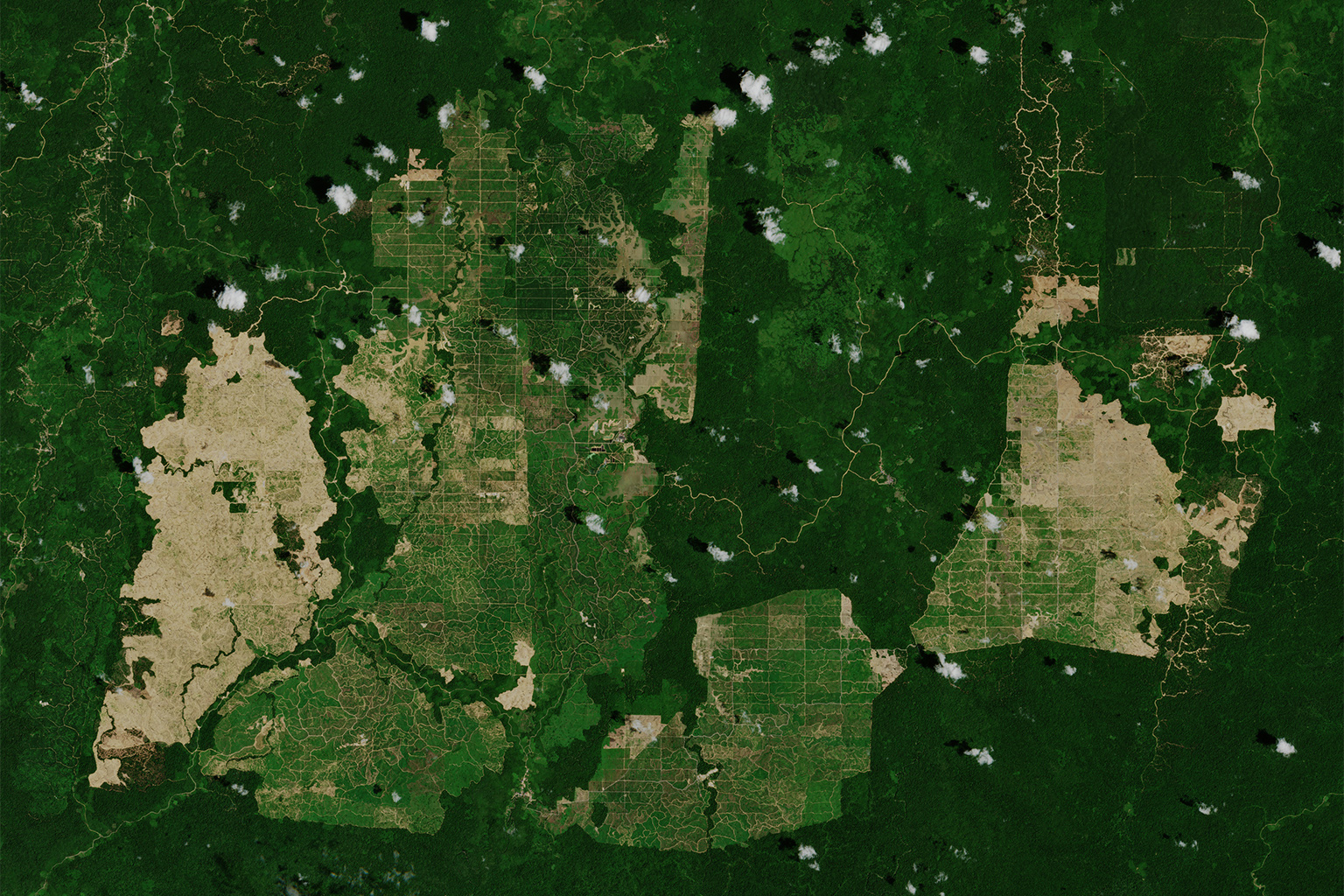
Space junk: A risk of ‘irreversible orbital pollution’
Just as thousands of tons of trash litter the Earth’s oceans and beaches, huge amounts of space junk now clutter our human endeavors in space.
According to the European Space Agency (ESA), the number of debris pieces larger than 1 centimeter (0.4 inches) in size — large enough to cause catastrophic damage to a satellite or spacecraft in a collision — is estimated at more than 1.2 million pieces. There are also more than 50,000 objects larger than 10 cm (4 in). As that number grows, fragments collide with each other, making even more fragments. In 2024, another 3,000 tracked objects were added to the total.
The ultimate concern is that space debris will collide with other debris and functioning satellites, creating more and more fragments, with the problem eventually spiraling out of control, unleashing the so-called Kessler Syndrome.
“A single [major] collision could trigger the Kessler Syndrome, a cascade of debris rendering key orbits unusable,” Walter Leal, chair of climate change management at the Hamburg University of Applied Sciences, Germany, wrote in an email. He cites the case of Iridium 33 and Cosmos 2251, two active satellites that collided in 2009, fragmenting into thousands of pieces.
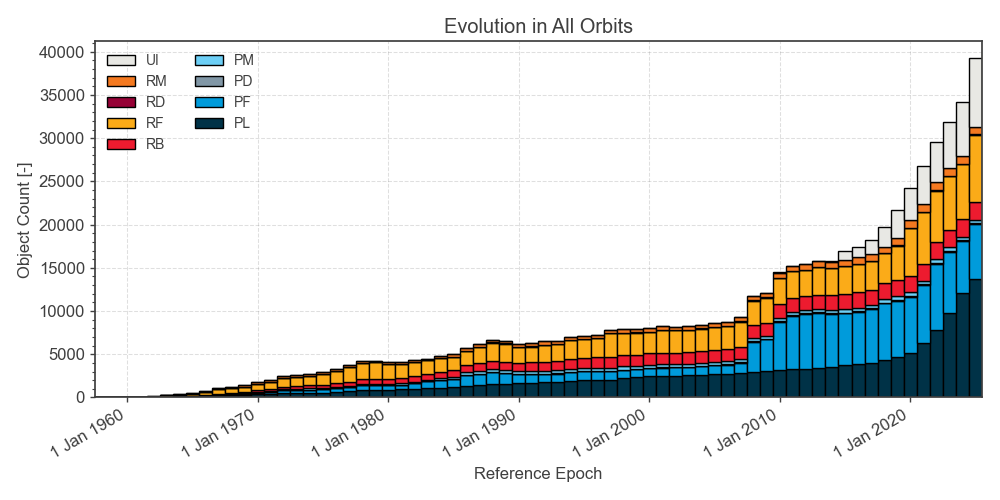
If such a disaster happens, it could severely disrupt global communications, GPS, and other vital tools including climate monitoring, says Leal. “Megaconstellations (e.g., Starlink, OneWeb) exacerbate this [collision threat] by adding tens of thousands more satellites, increasing congestion.
“My major concerns regarding space debris center on its exponential growth and cascading risks,” he adds. “With millions of debris fragments now orbiting Earth — ranging from defunct satellites to paint flakes — even tiny objects travel at hypervelocity (7-8 km/s [or 4-5 miles per second]), posing catastrophic collision risks to active spacecraft like the ISS [International Space Station] or vital satellites.”
Many experts believe that collisions — even if they don’t reach the scale of the Kessler Syndrome — are inevitable. It’s an issue the space industry has become acutely aware of, with satellites now making tens of thousands of maneuvers annually to avoid collisions with one another and space junk.
The European Space Agency is addressing the space junk problem with its active debris removal program. By 2030, there will not be a single satellite launched by the ESA that has a risk of generating space debris in an uncontrolled way, says Andrea Vena, ESA’s chief climate and sustainability officer. Still, experts agree that a range of space junk cleanup solutions are urgently needed.
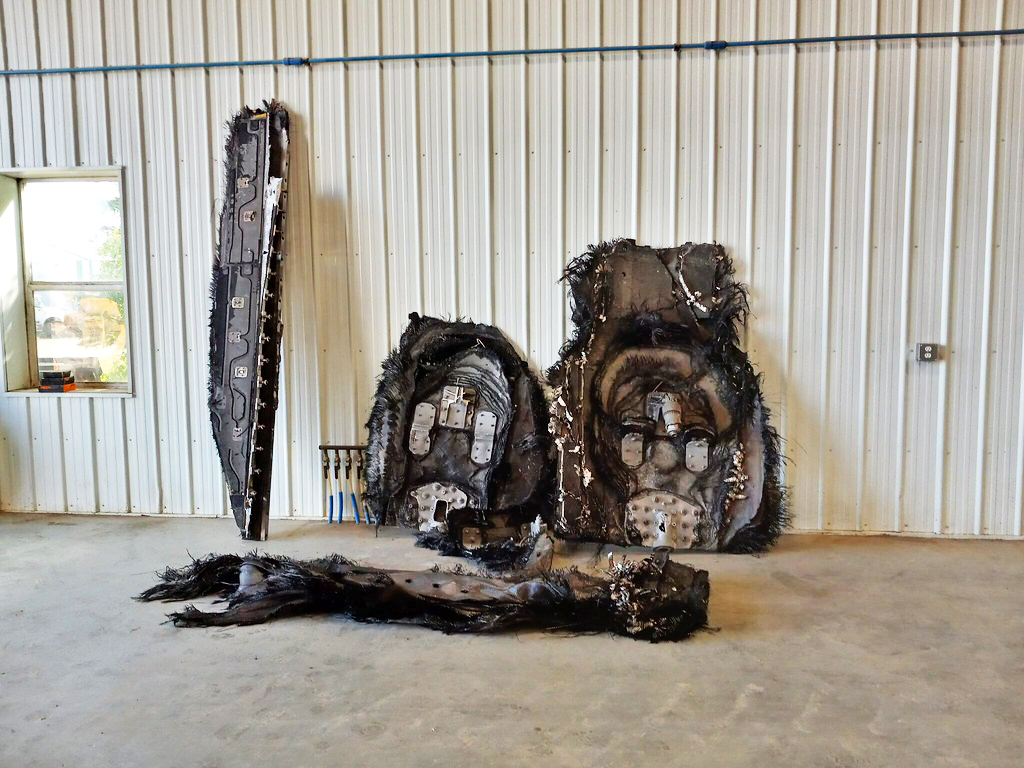
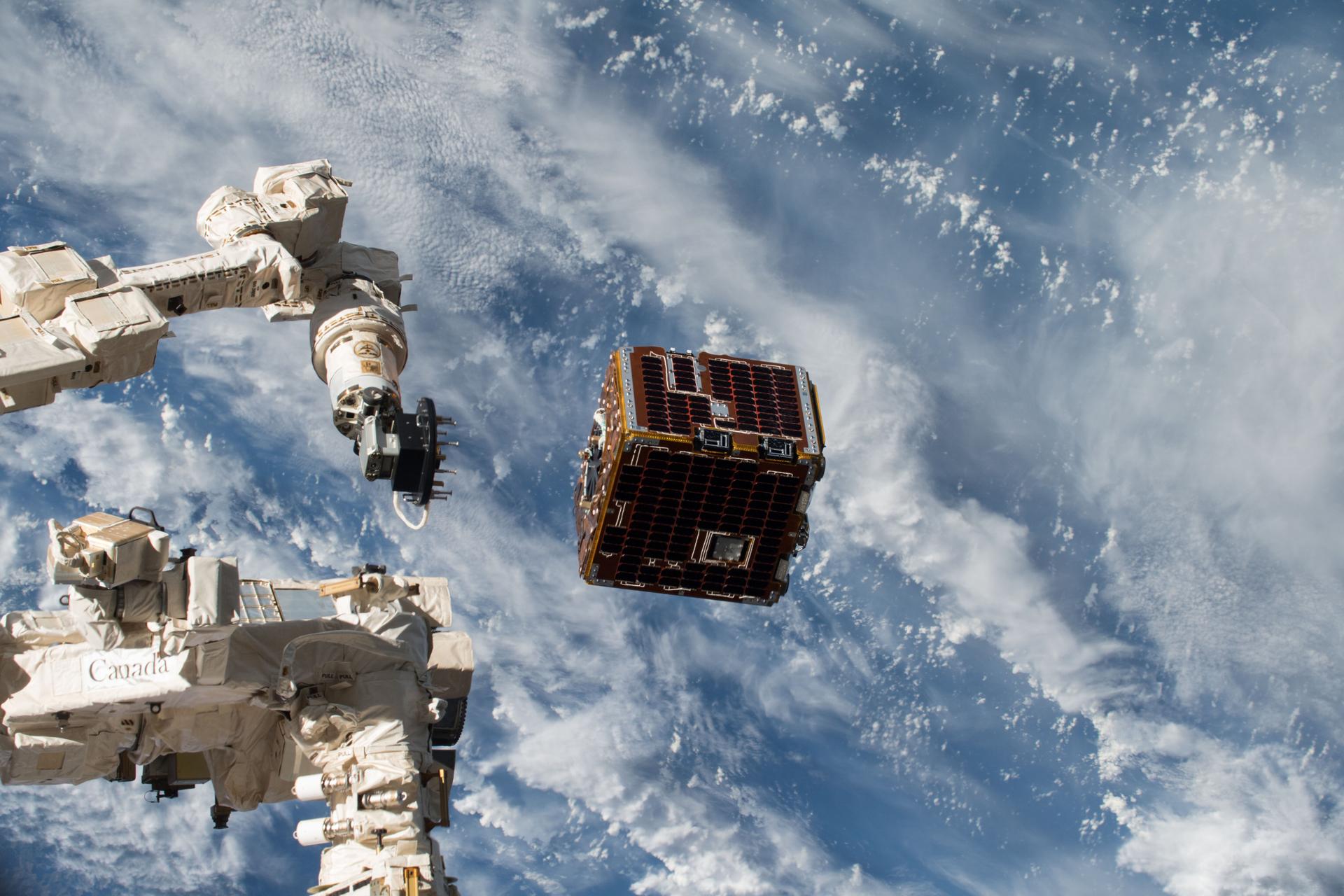
Space sustainability
The race for space is not set to end anytime soon. Satellite megaconstellations and grand visions for missile defense, colonizing the moon and Mars, are being proposed without clear plans for curtailing impacts here on Earth and in orbit.
“Through the commercialization of space, we’re seeing the cost per kilogram to launch go down and down,” says Wilson from Glasgow Caledonian University. “But we’re scaling up to a point that [space exploration] is becoming unsustainable.”
Wilson and others say that legislation and collaboration are vital at the national, international and global levels. A few past global agreements — primarily the Outer Space Treaty of 1966 — offer piecemeal preliminary guidance, but none fit today’s quickly evolving public-private space sector.
“We urgently need a UN-led treaty with standardized disposal protocols, liability clauses for incidents that create debris, and shared funding for cleanup missions,” writes Leal, adding that “urgent action is needed to prevent irreversible orbital pollution.”
Though the handling of space debris has become a hot topic, critics say legislation must go beyond what happens in orbit, and address growing environmental concerns related to the industry’s expansive footprint on the ground, where it is contributing to biodiversity loss, pollution and greenhouse gas emissions.
Kim believes the Montreal Protocol, an internationally binding treaty aimed at protecting the ozone layer, could act as a viable mechanism to regulate rocket and satellite burnup impacts. He notes that while further research funding is needed, action is essential due to already known potential harm. “All we need is to add one or two items [to the Montreal Protocol] related to spacecraft disposal,” he says.
That’s an issue the Montreal Protocol Scientific Assessment Panel is considering. “Our current understanding on the potential impacts on ozone from space activity is incomplete due to limited and uncertain knowledge of the resultant chemical and radiative changes in the stratosphere,” the panel wrote in a statement to Mongabay, adding it isn’t presently considering spacecraft monitoring or compliance within the protocol.
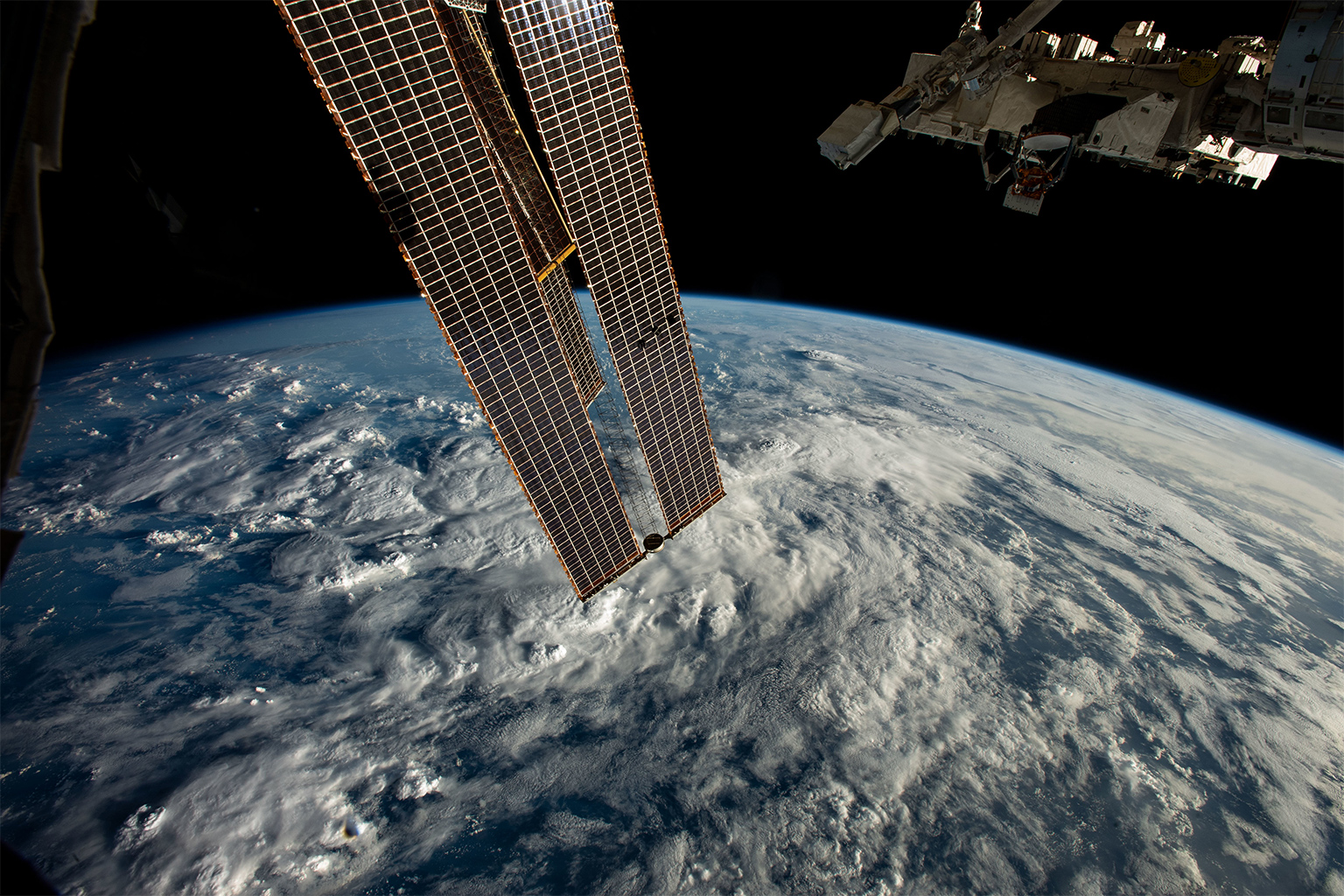
Experts like Wilson point to the upcoming European Union Space Act as an early regulatory front-runner, as it places sustainability at the forefront. He also believes voluntary standards, already in process by the commercial industry, will play a key role.
Vena at ESA, meanwhile, believes the future of space will follow circular economy principles, including careful assessment of materials used in spacecraft and satellite construction, prolonging vehicle lifespans, and ensuring safe, responsible disposal.
Wilson says the objective of his work and others isn’t to demonize or hamstring the industry, but to proactively support it to minimize harm. “The goal … is to say this is your footprint, and this is what you should be doing to reduce it, so that you’re becoming more efficient and more sustainable,” he says.
Banner image: NASA’s Artemis program plans to return humans to the moon, with the U.S. government agency working with SpaceX to develop the company’s Starship human landing system. Such explorations pose another unasked question: Who will be responsible for cleaning up space junk on the worlds that humanity explores? Image courtesy of NASA.
Citations:
Lawler, S., Boley, A., Rein, H., Fraser, W., Pike, R., Alexandersen, M., … Patterson, J. (2024). Light pollution from satellites: What’s coming and what astronomy research will be compromised. AAS/Division of Dynamical Astronomy Meeting, 55, 102.01. Retrieved from https://ui.adsabs.harvard.edu/abs/2024DDA….5510201L
Lawrence, A., Rawls, M. L., Jah, M., Boley, A., Di Vruno, F., Garrington, S., … McCaughrean, M. (2022). The case for space environmentalism. Nature Astronomy, 6(4), 428-435. doi:10.1038/s41550-022-01655-6
Kukreja, R., Oughton, E., & Linares, R. (2025). Greenhouse gas (GHG) emissions poised to rocket: Modeling the environmental impact of LEO satellite constellations. arXiv. doi:10.48550/arXiv.2504.15291
Anderson, K., Brewin, R. J., Mleczko, M. M., Mueller, M., Shutler, J. D., Wilkinson, R., … Gaston, K. J. (2024). The dark side of Earth observation. Nature Sustainability, 7(3), 224-227. doi:10.1038/s41893-023-01262-x
Ang, L. P., Kong, F., Hernández-Rodríguez, E., Liu, Q., Cerrejόn, C., Feldman, M. J., … Yin, X. (2024). Rocket launches threaten global biodiversity conservation. Communications Earth & Environment, 5(1). doi:10.1038/s43247-024-01963-x
Dallas, J. A., Raval, S., Alvarez Gaitan, J. P., Saydam, S., & Dempster, A. G. (2020). The environmental impact of emissions from space launches: A comprehensive review. Journal of Cleaner Production, 255, 120209. doi:10.1016/j.jclepro.2020.120209
Ryan, R. G., Marais, E. A., Balhatchet, C. J., & Eastham, S. D. (2022). Impact of rocket launch and space debris air pollutant emissions on stratospheric ozone and global climate. Earth’s Future, 10(6). doi:10.1029/2021EF002612
Revell, L. E., Bannister, M. T., Brown, T. F., Sukhodolov, T., Vattioni, S., Dykema, J., … Rozanov, E. (2025). Near-future rocket launches could slow ozone recovery. npj Climate and Atmospheric Science, 8(1). doi:10.1038/s41612-025-01098-6
Dominguez Calabuig, G. J., Wilson, A., Bi, S., Vasile, M., Sippel, M., & Tajmar, M. (2024). Environmental life cycle assessment of reusable launch vehicle fleets: Large climate impact driven by rocket exhaust emissions. Acta Astronautica, 221, 1-11. doi:10.1016/j.actaastro.2024.05.009
Sirieys, E., Gentgen, C., Jain, A., Milton, J., & De Weck, O. L. (2022). Space sustainability isn’t just about space debris: On the atmospheric impact of space launches. MIT Science Policy Review, 3. doi:10.38105/spr.whfig18hta
Boley, A. C., & Byers, M. (2021). Satellite mega-constellations create risks in Low Earth Orbit, the atmosphere and on Earth. Scientific Reports, 11(1). doi:10.1038/s41598-021-89909-7
Maloney, C. M., Portmann, R. W., Ross, M. N., & Rosenlof, K. H. (2025). Investigating the potential atmospheric accumulation and radiative impact of the coming increase in satellite reentry frequency. Journal of Geophysical Research: Atmospheres, 130(6). doi:10.1029/2024JD042442
Leal Filho, W., Abubakar, I. R., Hunt, J. D., & Dinis, M. A. (2025). Managing space debris: Risks, mitigation measures, and sustainability challenges. Sustainable Futures, 10, 100849. doi:10.1016/j.sftr.2025.100849
FEEDBACK: Use this form to send a message to the author of this post. If you want to post a public comment, you can do that at the bottom of the page.









